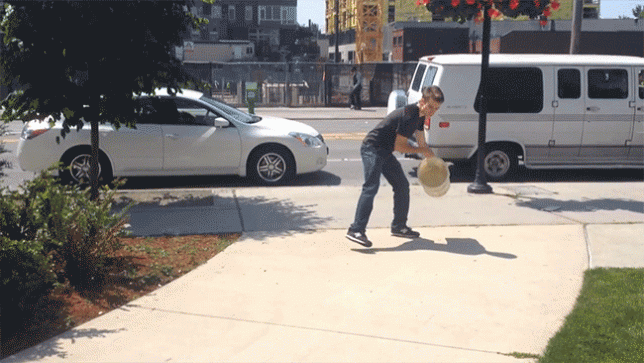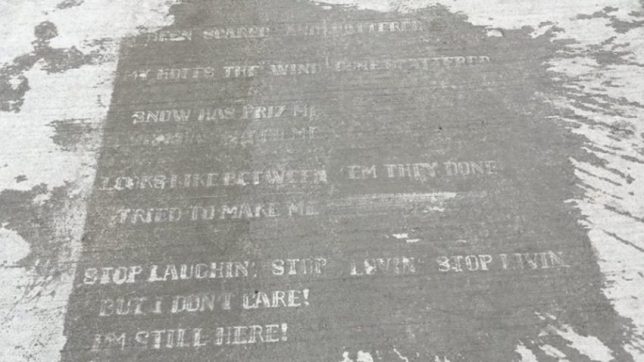The post How Poetry and Photography are Alike and How it Can Impact Your Photography appeared first on Digital Photography School. It was authored by Megan Kennedy.
On the surface, poetry and photography may seem like completely different mediums. One deals with the written word, whereas the other creates images. But as two forms of artistic expression, poetry and photo-making have more in common than one might think. For example, both writing and photography rely on narrative and visual language to operate. Light and space are illuminating factors in both mediums too. Investigating these shared attributes (and many more) can affect our photographic practice. Let’s look at a few ways in which poetry and photography are alike and how the poetic word can impact your approach to image-making.

An empty page is much like the blank canvas or camera sensor in that it holds unlimited artistic potential.
A poem without words
The idea that written language conveys something more than just meaningless scribbles dates back to at least 3500 B.C. However, it was an ancient Roman poet by the name of Quintus Horatius Flaccus (known as Horace) who said that “a picture is a poem without words”.
Poets deconstruct images to form cohesive perspectives. As viewers, we read an image as we would written language, piecing information together to determine a picture as a whole. Through the elements and principals of composition and design, a photographer works in verse, weaving impressions and notions that awaken under the eye of the viewer.
With the careful cultivation of detail, both photographers and poets gain a better appreciation for qualities like color, pattern, texture, shape and form. By being deliberately attentive to aspects like light, rhythm, narrative, and emotion, (aspects that are of great importance to both poetry and photography), we can actualize Horace’s observation with deeper, more metered imagery made up of layers of meaning and emotional range.

Though devoid of written language, photography conveys an image that holds meaning – a poem without words
Creating a little picture
While he is best known for his novels The Dharma Bums and On The Road, Jack Kerouac was also an avid writer of westernized haiku. The haiku, a style of poetry originating in Japan, is a small poem traditionally based around images of the natural world.
Kerouac stated that Western haiku “must be very simple and free of all poetic trickery and make a little picture…”. His statement likens the haiku to that of the photograph, encapsulating a moment in time.
Some examples of Kerouac’s haiku include;
The taste
of rain –
Why kneel?
Morning sun –
The purple petals,
Four have fallen
April mist –
Under the pine
At midnight
As a poem limited to three lines, only the most necessary information may be included in a successful haiku. This approach is not dissimilar to minimalist photography, where select aspects of a photograph are emphasized by the minimization or eradication of others.
Kerouac’s comparison between the haiku and a picture paints the photographer as a sculptor of imagery. By sacrificing superfluous details and conveying a very specific idea, both photographers and poets appeal to an audience with an efficacy that leaves the lasting impression of well-executed artwork.

A change in perspective
Both the poet and the photographer study a subject through many lenses. As an example, here are two poems of Wallace Steven’s Thirteen Ways of Looking at a Blackbird;
I
Among twenty snowy mountains
The only moving thing
Was the eye of the blackbird
IX
When the blackbird flew out of sight
It marked the edge
Of one of many circles
These two ways of seeing reflect how perspective is malleable, shaped by individual experience and thought. The gaze of the photographer and that of the poet are both analytical, yet individual. And just as there are many ways to approach single subject poetically, there are as many ways to approach the same subject photographically.
Researching other photography can be useful in gaining insight into how to attempt a subject. Interestingly, having a look at a poetic perspective can prove to be a useful insight in the same way. Studying the observations of poets can help draw out unique approaches to an environment or scenario, revealing useful opportunities and perspectives.

Transformation
Both poetry and photography have the ability to zoom in and isolate, re-framing a subject and transforming it into something of significance or beauty. Take this excerpt from The Wasteland by T.S. Eliot;
Sweet Thames, run softly, till I end my song.
The river bears no empty bottles, sandwich papers,
Silk handkerchiefs, cardboard boxes, cigarette ends
Or other testimony of summer nights.
T.S. Eliot paints a story through the listing of refuse that is often found in rivers. By focusing his literary lens on inanimate objects that hinge on human intervention, T.S. Eliot forges strong images in the mind, relating to the reader through simple and concise language. The more the writer lists, the clearer the picture of the water becomes. Yet at the same time, in a separate image, the viewer forms impressions of pollution and waste, an alternative landscape to that which the poet describes.
Poetry gives seemingly mundane subject matter a new significance. This same phenomenon occurs in photography. Under the scrutiny of the camera, a subject takes on a transformation. Through the act of photography, a subject is separated and elevated from the day-to-day, isolating a moment in time.

Conclusion
The fact is that neither poetry nor photography is a complete reality. No art form is. Yet just as a photograph is a painting of light, the poem is a painting of words, and the experiences of both the photographer and the poet are entwined in their intention to express a version of reality that is both shared and unique.

The post How Poetry and Photography are Alike and How it Can Impact Your Photography appeared first on Digital Photography School. It was authored by Megan Kennedy.








You must be logged in to post a comment.